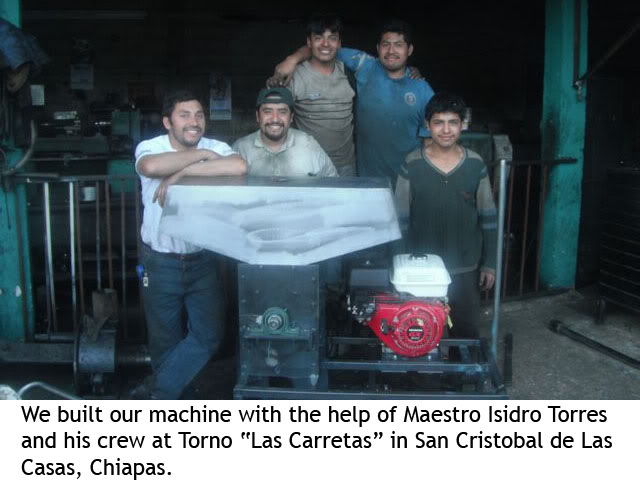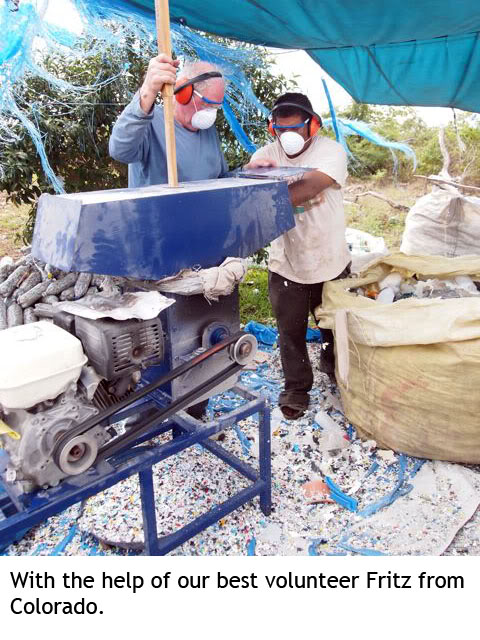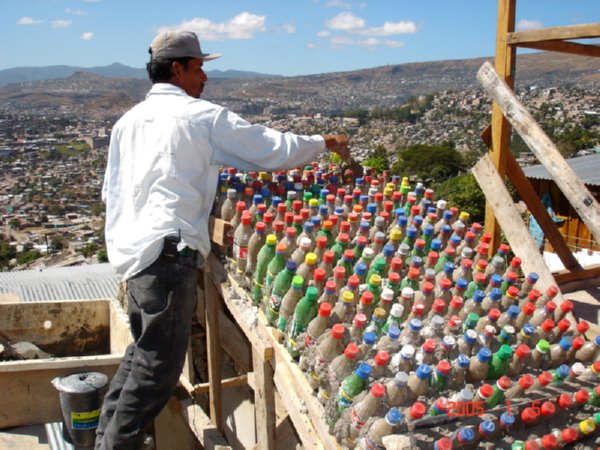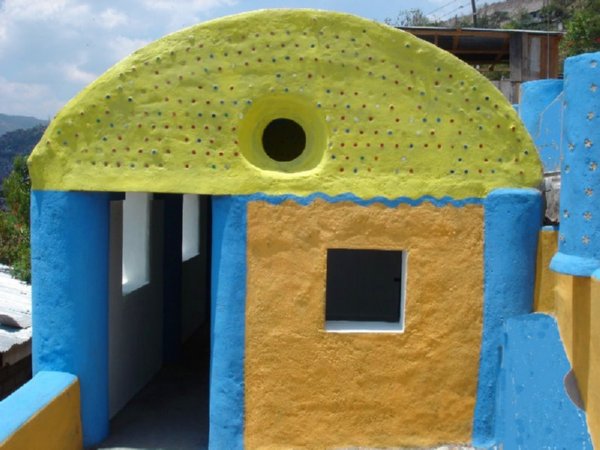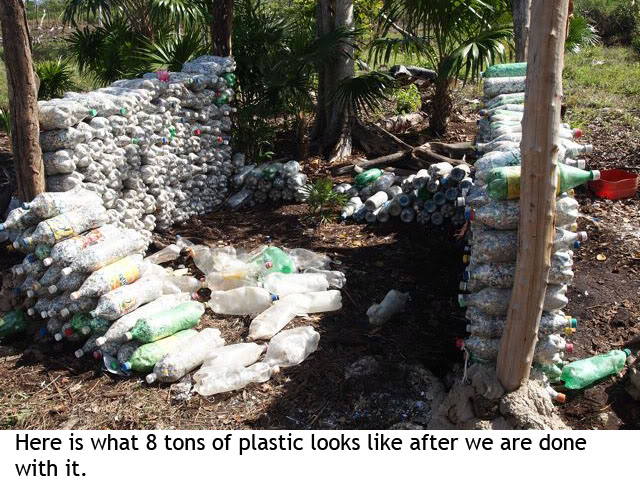Civic Intelligence and Community Building
We probably need to talk about the various relevant interpretations of community building. This should include traditional community development (and "development" generally). It should also include online communities, research & action networks, and new varieties of communities that we can conceptualize that are based to a large degree on civic intelligence.
Contents
Introduction
This chapter presupposes that the notion of a community is important. However, Western culture appears to favor those who are leaders, and those who are willing to do whatever it takes to better themselves, without concerning themselves with the people whom they trample on their way to the top. Before contemporary accessibility of resources, people survived best with the help of their community. This logic is very primitive, and in a world where everything is instantly accessible and available at all times, it is difficult to remember that it is the people with which we are surrounded by that allow us to flourish and grow independently.
Within any network of social connections, knowledge of all kinds is abundant, more than anyone will ever know. It really is a small world. Within a given community of local individuals, there can be so many new ideas, as well as old ones that could use new thoughts; there can be “ties” between people which bring them together under a cause; and there might be just enough brain cells between them to plan projects, that which the entire community can benefit from.
Civic intelligence promotes the understanding that each of us are responsible for how well the communities in which we live and interact lives up to its potential capacity. The traditional role of service organizations has been to identify deficiencies or problems within specific communities and dole out money and man hours to try and fix the problem. In many cases, this has led to a passive populace reliant on charity to meet their needs.
The Asset-Based Community Development Institute is an example of an organization doing significant research and projects to counter this outdated paradigm. Their central focus is on highlighting the resources and skills within communities and leveraging those assets to build communities capable of meeting their own needs.
This chapter will show how strengthening and developing the capacity of communities in whatever shape they take is a foundational part of building a civically intelligent society.
The number and scale of projects within these federations grow as they learn from one another. First, one federation savings group develops a solution—such as a scheme to upgrade their homes or to develop new homes, a community-managed toilet, a partnership with the police for community policing, or a change in land use regulations that cuts the costs of land for housing. Then, other groups within the federation visit and discuss the innovation with those who implemented it. They consider how they might try a similar initiative, adapted to their needs and capacities, and the availability of land and other resources. Also, the different national and citywide federations directly support and learn from one another, as well as supporting the development of comparable federations in other nations. (Jones V.)
The example above illustrates starting from a seed and framework and growing civic intelligence.
Posted by House
Case Studies
Shack / Slum Dwellers International
From Breakthrough Communities: Sustainability and Justice in the Next American Metropolis.
The number and scale of projects within these federations grow asthey learn from one another. First, one federation savings group develops a solution—such as a scheme to upgrade their homes or to develop new homes, a community-managed toilet, a partnership with the police for community policing, or a change in land use regulations that cuts the costs of land for housing. Then, other groups within the federation visit and discuss the innovation with those who implemented it. They consider how they might try a similar initiative, adapted to their needs and capacities, and the availability of land and other resources. Also, the different national and citywide federations directly support and learn from
one another, as well as supporting the development of comparable federations in other nations.
Forgiveness as a Bridge to Community Building
The act of civic intelligence is impossible without the ability to communicate effectively. Many of the global issues we face today are ones of war; both the current act, or the repercussions of feuds that originate centuries ago. Sadly war does not end with the last shot fired but continues on in the hearts of those impacted by it for many generations, creating an endless cycle of hate, violence and intolerance. Post war actions are paramount to the healing of nations; it is critical that the path to the peace process include inquiry, truth, and justice, in order for healing to begin, and relationships between nation states repaired. Bringing everyone to the table to communicate can be virtually impossible and take many years, but it is vital to the civic health, not only of the anguished nations but globally.
Ireland has suffered centuries of political strife and sectarian violence, over the years many peace talks have resulted in failure and increased violence. Although the IRA disbanded in 2008, there is still self-imposed segregation of the Catholics and Protestants, with the pain of violence etched in the streets and minds of those who witnessed brutality and lost loved ones. A positive reaction to this simmering anger sprang out of the Irish school system when they created a relationship with The International Forgiveness Institute, creating a school program to help move the nations youngest from seeking ‘justice’ to mercy. The process is shown in the documentary, The Power of Forgiveness, where very young children are guided through the method by their teacher. They focus on the smaller issues of childhood, such as a stolen toy or a mean look, the program instills tools for these children to guide themselves through anger to forgiveness. By practicing this regularly, new neural pathways are formed, creating a natural response to friction that allows for anger and frustration, but leads to mercy and peace. The documentary also shows how other nations, communities and groups have journeyed through acts of tremendous violence to prepare themselves to forgive. The film discusses the essential nature of acknowledgement of crime, and the course of forgiveness, while facing the issues preventing it. Without the process of forgiveness, there can be no healing, and no further active communication between the impacted parties.‘Forgiveness does not change the past but it does enlarge the future’ Paul BoeseHow can civic intelligence help to bring warring parties to the table? Coming to the table is not enough if the communication is unproductive and results in arguments, friction, and further fragmentation of a community. How can civic intelligence assist in the process of communication so that it is highly productive for all participants? One way is to use facilitators who are neutral to the issues at hand. In his book “Non Violent Communication a Language of Life”, Marshall Rosenberg outlines the process of non-violent communication (NVC) and how it can be applied to individual communication to highly charged situations such as Israel. Rosenberg has recognized that the reason that most negotiations break down is because people are not feeling truly heard, recognized and empathized with, creating further resentment. The NVC program has four stages to establish a greater flow of communication in order for healing to begin. The ‘Center for Nonviolent Communication’ has taught NVC to many hundreds of people, sending facilitators to many war torn countries to mediate dialogue,
“Worldwide, NVC now serves as a valuable resource for communities facing violent conflicts and severe ethnic, religious, or political tensions.” (P.11)This method is useful not only for those struggling with extreme conflict but also for smaller communities simply trying to have a town meeting. The result of meetings where people feel truly heard and understood is a greater empowerment and commitment to relationship with community. The development of similar programs that allow communication to happen is essential to the building and retaining of community.
(E.J)
Community Building to Combat Pollution
- A functioning community that engages in productive communication, problem solving and civic action is paramount to solving many of the environmental problems that society faces today. Many of these issues are not going to be solved by government or industry but by grassroot organizations committed to actionable solutions. The case study below describes how two individuals inspired a community to come together to combat the local pollution of their beaches.
- Ocean trash is a global issue of our time, causing a cascade of problems for the delicate eco-systems within it. Overall ocean pollution is growing exponentially as we increasingly use the oceans for commercial travel and industrial shipping. According to a 2009 report by the Regional Seas Program of the United Nations Environment Program (UNEP) "Marine litter from both land and sea based activities has accumulated to such an extent that in central Pacific areas the mass of floating plastic is six times greater than that of plankton. Mass concentrations of marine litter consisting of plastics, ropes, fishing nets and cargo associated wasters (including whole shipping containers) extending over many kilometers have been observed in high 'sink' areas in the equatorial convergence zone. It is estimated that over 46,000 pieces of litter are on the surface of every square mile of ocean today. 70% of marine litter will eventually sink to the seafloor." (Ecosystems and biodiversity in deep waters and high seas 2009). While this study also describes other ocean pollution such as noise, chemical, oil and nuclear, the largest direct threat to marine life is from plastics. Plastic waste accounts for the majority of ocean garbage, and constitutes approximately 90% of all trash floating on the ocean surface (UNEP 2009). Unlike other types of trash, plastic does not biodegrade. Rather, its process is photo-degradation through sunlight, resulting in it breaking down into smaller and smaller pieces that never disappear. Plastic pieces are then eaten by marine life, get stuck on reefs, clog ocean floors, and wash up onto the worlds beaches. Ocean trash poses a significant threat to the health of sea creatures of all sizes, "Over 100,000 marine mammals and one million sea birds die each year from ingesting or becoming entangled in plastic." (NOAA 2009) Yearly approximately 10% of the worlds' land garbage ends up in the ocean (UNEP 2009) and with a population approaching 7 billion people this threatens the future health of the world's oceans, unless solutions presented and global actions are enacted. While many of the environmental issues that we face today are hard for the average person to fully grasp, trash is a problem that everyone can see, from gum stuck on our city sidewalks to garbage washing up on our shores; it is therefore a tangible reality. Despite the physical actuality of a global problem with trash creation and disposal, there is still a diffusion of responsibility as to who is going to clean it up. Often society looks to government agencies to clean the streets and provide garbage services, but who is responsible for the trash in the oceans that wash up on the shore? Is it possible to develop a framework of civic intelligence that helps to negate that diffusion as well as enabling every citizen to take ownership of what they are disposing, along with the entire cycle of trash?
The Founding of MARISOL
- When Carmella Ihrig and John Craft went to Mahahual, Mexico for a scuba diving trip, they were faced with the physical reality of ocean pollution. The reefs they set out to explore were choking among tons of garbage. The beaches they imagined they would enjoy were similarly strewn with litter from plastic bottles to medical waste, making the beaches less an idyllic vacation and more a danger zone. While many would have turned away unable to fathom a solution to such an enormous global issue, Carmella and John stayed, founded MARISOL, and started a new adventure collecting garbage from the reefs and beaches. “As divers and activists we feel compelled to preserve this international jewel.” (MARISOL 2007) Had they simply continued to clean the beaches and reefs would this have been an example of civic intelligence or just good intentions on the path to folly? As they report on their website, “So much waste that is washing up on the beaches everyday. We have been told that the currents flush the waste in the ocean to this part of the world. As we have started the clean-up process, we do find garbage from all over Latin America and the Caribbean here. We have also seen waste from China and North America.” (MARISOL 2007) To continue only in the act of removing the garbage would have been a losing battle on all fronts, as the garbage continued to wash onto the reef from all over the world. Realizing this they developed a mission to deal with the whole problem rather than just the one they were faced with, “ Our goal is to address the obvious issue first, then work our way backwards to determining and documenting where it comes from, and how it finds its way into the water so consistently” (MARISOL 2007). Carmella and John creatively solved the problems they faced, and evolved new goals for MARISOL, "To build long-term community based recycling programs to clean the oceans and beaches along the largest reef system along the western hemisphere" (MARISOL 2011).
Engagement
- “We started our project cleaning beaches, not really knowing where we were going to bring the garbage or what we were going to do with it" (MARISOL 2011). Initially, community involvement with the project came from their interactions with the nearest recycling station, which was two hours away. They negotiated a deal where they would be compensated for certain materials that they would bring, such as metals, but the majority of the garbage collected was plastic bottles. “We managed to bring our first 6 tonnes of plastic to the facility, but it was multiple truckloads and ultimately made no financial or environmental sense to do this.” (MARISOL 2011) They renegotiated with the recycling station, who started coming to the beach with a larger truck but they had to have a certain weight to make it a viable journey, and they did not have the labor force to collect that much that quickly. “This led us to consider shredding or crushing our beach plastic to reduce the volume and making the journey to the recycler more cost effective. We considered buying a used shredder from the States, but the machines we found were either cost prohibitive or they ran 3 phase power which is not available on the beach.” (MARISOL 2010) Rather than allowing this setback to stop their work they kept on trying to find solutions, ultimately reaching out to the community for help. Through meeting with locals and presenting their dilemma they garnered local support and inspiration. Each group was inspiring and empowering the other to continue the work. “The “Do it yourself” culture here in Mexico inspired us to try and build a simple, low cost plastic shredder with the help of a local machine shop.” (MARISOL 2010) The shredder was created through collaboration between local carpenters and metal workers, who, having never owned any store bought equipment, brought to the task their experience and skill from making their own machines and tools (MARISOL 2010). The machine can “Grind 210 kilos in 6 hours” (MARISOL 2010). New ideas were sparked by experiencing the physical reality of the shredded plastic sitting before them, “ Inspired by other organizations who use plastic bottles as building materials. Eco-tec, for example, uses 2 liter soda or water bottles and fills them with sand or dirt to create concrete blocks” (MARISOL 2010). With this new direction their vision evolved to enable the local community to have a recycling program that could create a viable income, while empowering them to greater ownership of the beaches. Through global donations they are able to hire local residents to collect trash and then shred for construction materials. “$200 pays for two people to work for one week. They are averaging 2 tons of garbage per week” (MARISOL 2011). Eventually as the goal is for this process to become self sustaining for the local community, as more of the plastic “bricks” are utilized in building projects.
Orientation
- The evolution of MARISOL has been a delicate balance of interaction with local community combined with the skills and enthusiasm of the founders. All of these dynamics have expanded each other to create a working organization that values the democratic process. The ability of the founders to adapt to the realistic capabilities of the environment they find themselves working in, and the embracing of new ideas and designs have also worked to sustain them.
Organization
- MARISOL operates on a number of levels.
- Operation to clean the beaches and reefs of plastic pollution, to enable health for the eco-systems within.
- To recycle the plastic so that it does not further pollute by sitting in a land fill.
- To create a community business that can employ residents, further helping to boost the economy of Mauhual, Mexico.
- To use the plastic 'bricks' to create housing projects.
- To bring in volunteers from around the world, to support MARISOL in global education of the problems of plastic garbage.
Intelligence
- MARISOL enacted civic intelligence in several key ways.
- They did not rush into the community with a decided format and force it into action.
- They evolved their foundation by working with the community. They did this through, engaging the community, accepting feedback and incorporating ideas into their goals.
- They adapted to the resources available, e.g they worked around the available electricity rather than trying to swim upstream and create more power. Through experimentation they discovered what was working and quickly let go of those aspects that were in-practical to long term survival.
- They were open to the ideas from other organizations, who already had a functioning model, but they adapted them to work within the culture of Mexico.
- They used the skills they came with, such as diving, and incorporated skills from the community to help achieve collective goals, e.g community involvement in building the shredding machine.
Products and Projects
- The long term direction for MARISOL is to create a sustainable recycling program for the communities along the Mexican - South American Reef. By engaging the residents in collaborating on a shredding machine they have inspired a greater enthusiasm that not only can clean the beaches and reefs but create many jobs in the process. Through the knowledge of companies such as Eco-Tech [1] and BUVAD [2], they applied successful working models to their project. Currently they are at the early stages of using the plastic 'bricks' so it will be interesting to see if they can capture the same outcomes of the companies that they are trying to mirror. Plastic bricks have become a viable way for low income areas to build community buildings, family homes or to assist in recover after environmental devastation.
- picture below is an example of education program to instruct residents in how to build their own buildings using plastic bottles. From Eco-tec website.
- The picture below shows a complete building in Honduras. From Eco-tec website
- Picture below from MARISOL website showing the results of their work.
Resources
Currently MARISOL resources are from the donation of time from the founders, and various volunteers from around the world. Additional resources come from donations to the foundation from the general public, worldwide. Funds of $200 can employ two people for two weeks. In theory once they begin to 'sell' the plastic bricks they will create additional funds.
Pattern Cards
- Engaged Tourism (107)
- originally the founders came to the MESO reef as tourists. After founding MARISOL they are actively working to bring in volunteer tourist to help in their work. Volunteers work to clean the beaches, shred the plastic and make 'bricks'. The volunteers gain a greater understanding of the issue of ocean garbage and actively work in a project to recycle it. Volunteers also gain experience of working within a different culture, and learn about the issues they face as a community.
- Self-Designed Development (106)
- The founders of MARISOL started with the right approach, one that included the feedback of the community. There thoughts of creating a recycling center to create building materials for local construction was not one they forced, but one that evolved through discussion.
- Appropriating Technology (108)
- The creation of the shredding machine and the development of the plastic bricks, are forms of technology that are already being experimented with around the world. The notions of what makes a building, how is should be constructed, and the striving so many have for the 'dream home' are encouraging those to think creatively about design. The planet does not have enough resources for 7 billion people to have a wood framed home, but plastic bottles allow for many to build and own a home, community center, schools and many other needed buildings.
Conclusion
- Solutions are only going to be discovered, and enacted, when entire communities take ownership for this problem. Often the most serious trash pollution falls into the poorest communities, who are struggling to meet the needs of the immediate survival and have no desire, energy, or finances to tackle the problem. MARISOL is an example of how the actions of one individual can spark the unity within a community to empower active solutions, and it certainly demonstrates an inspiring start. However, to truly embody civic intelligence, it needs a global framework so their organization does not simply float individually, making small steps but not combating the root of the problem. It is imperative that a network of similar foundations unite to work cohesively to combat the reality of ocean garbage and to create long-term solutions to ceasing the problem altogether. The creation of a “world brain” with formats available for similar small communities to develop their own program is essential to greater, global solutions. The reduction of packaging and the greater need to discover creative solutions to recycling is going to happen with local communities working with manufacturers, a great example of this interaction is a campaign by the Women’s Institute in England. In 2006, the Women’s Institute started the ‘Packaging Campaign’ designed to bring attention to manufacturers and consumers to the waste create by needless packaging. The campaign asked for WI members to leave packaging at the supermarket check out on one day in 2006. The results of this campaign was the biggest supermarket in England, Tesco, started asking customers to do the same so they could discern which packaging people considered unneeded. If organizations like MARISOL connected with campaigns like the WI, they would create a program of change right through the chain of trash. Additionally, MARISOL could work with oceanographers to help define where these plastics are coming from in an attempt to mitigate further contamination.
- However, does it serve the community to create a financial framework around the plastics they are simultaneously trying to combat getting there in the first place? Unfortunately, it does not appear that any solutions are going to happen for generations to come so creating a reliance on these products for immediate gain will help to reduce short term pollution to the greater environment for the good of the community. This is still an issue to ponder.
Conclusions
For Future Exploration
References
The Center for Nonviolent Communication.
http://www.cnvc.org/
Rosenberg, Marshall. Nonviolent Communication A Language For Life. Puddle Dancer Press.2003
The Power of Forgiveness-http://www.thepowerofforgiveness.com/

